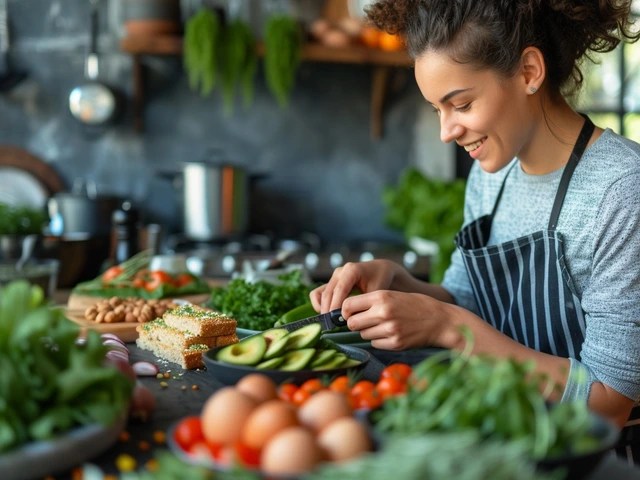Nutritious Meals for Dogs: Simple, Healthy Recipes You Can Make at Home
What your dog eats affects energy, coat, digestion, and joint health. You don’t need fancy ingredients to make meals that support daily life and long-term wellness. Below are clear, practical ideas you can use right away — plus safety tips vets will want you to know.
Simple Balanced Meal Templates
Aim for a consistent plate. A good rule for many adult dogs is roughly: 40% lean protein, 30% vegetables, 30% cooked carbohydrates and healthy fats. Examples that follow use that template.
Easy recipe 1 — Chicken & Sweet Potato: Cooked skinless chicken breast (40%), mashed sweet potato (30%), steamed green beans or carrots (30%). Add a teaspoon of fish oil for omega-3s if your vet approves.
Easy recipe 2 — Salmon & Rice: Baked salmon (no bones) as the protein (40%), cooked brown rice (30%), peas or cooked spinach (30%). Salmon adds EPA/DHA for coat and joint support.
Easy recipe 3 — Beef & Pumpkin: Lean ground beef or turkey (40%), cooked quinoa or oats (30%), canned plain pumpkin (30%) — great for digestion. Rotate proteins so meals aren’t repetitive.
Safety, Supplements and Prep Tips
Watch portion sizes. A quick starting point: many adult dogs eat about 2–3% of their body weight per day split into two meals, but active dogs may need more and older or less active dogs less. Use your dog’s body condition (ribs should be felt but not seen) to adjust portions.
Foods to avoid: chocolate, grapes and raisins, onions, garlic, xylitol (in many sugar-free foods), raw yeast dough, macadamia nuts, alcohol, and caffeine. Don’t feed cooked bones or highly seasoned human meals — salt and spices can hurt your dog.
Supplements: A quality fish oil gives omega-3s that support skin, coat, and joints. Homemade diets often miss calcium; if you remove bones from a recipe, talk to your vet about calcium or bone-meal supplements. Probiotics can help dogs with sensitive stomachs, but introduce any supplement slowly.
Prep and storage: Cook proteins fully to kill bacteria. Keep meals plain — no added salt, butter, or sauces. Freeze meal portions in single-serving containers and thaw in the fridge overnight; use fresh leftovers within 2–3 days. When switching foods, change gradually over 7–10 days: mix increasing amounts of the new meal with the old to avoid upset stomach.
If your dog has allergies, kidney disease, pancreatitis, or thyroid issues, ask your vet before trying homemade diets. Small changes can make a big difference — better energy, shinier coat, and fewer tummy problems — and you can do most of it without fancy recipes or expensive ingredients.

Nutritious Morning Meals: Healthy Breakfast Ideas for a Productive Day
Starting your day with a healthy breakfast can significantly impact your productivity and well-being. This article explores various nutritious breakfast options that cater to different tastes and dietary needs. It delves into the importance of incorporating whole foods, balancing macronutrients, and the role of hydration in kick-starting your day. Whether you're a busy professional or a health enthusiast, these breakfast ideas are designed to provide the energy and nutrients needed for a productive morning.

The Science Behind Eating a Healthy Breakfast
Aug, 14 2023

Revitalize Your Skin with Gua Sha Techniques
Jun, 25 2024


